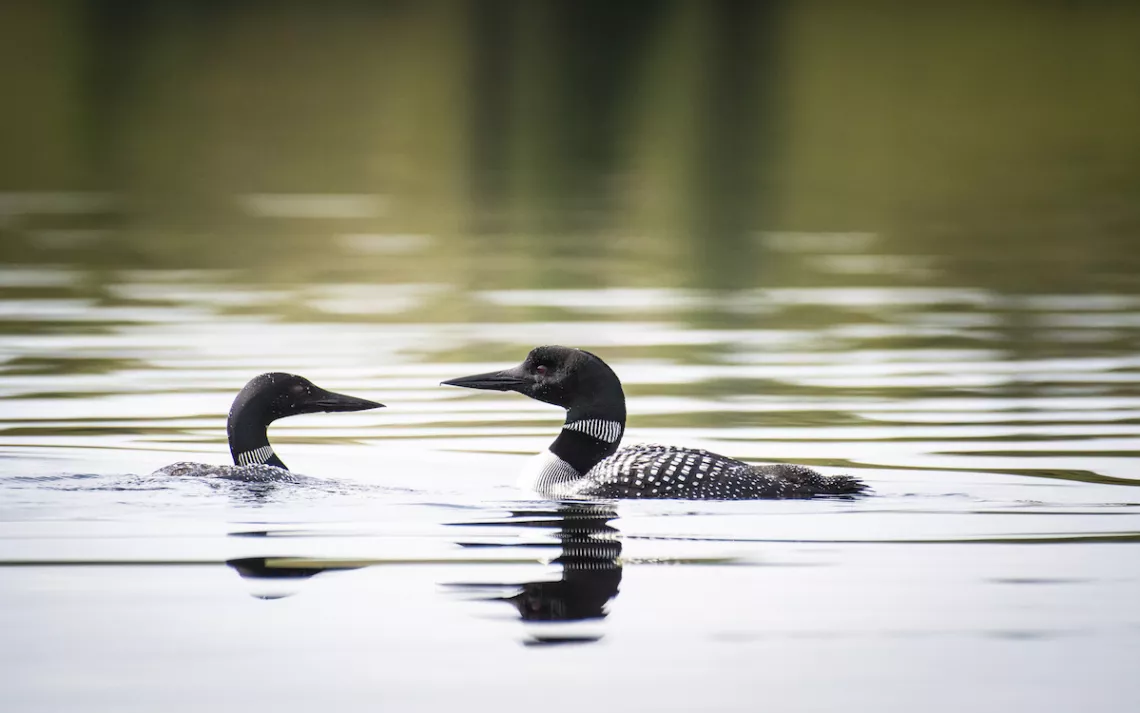Climate Change Threatens Two-Thirds of North American Birds
Audubon report details how rising temperatures will impact every bird species
Photo by RLSPHOTO

A new report from the National Audubon Society shows that two-thirds of North America’s birds face major challenges including extinction if global temperatures are allowed to increase 3 degrees Celsius by 2100. However, if temperature rise is limited to 1.5 degrees, the majority of those disruptions can be stopped.
The report, Society Survival by Degrees: 389 Bird Species on the Brink, is a major update of Audubon’s influential 2014 Birds and Climate Change Report, which examined the impacts and range shift of 588 birds in North America under various climate scenarios. In the new report, researchers looked at data for 604 species collected from 70 sources including over 140 million individual records of birds. They were able to overlay this information with data on human land use, agriculture, and urbanization trends that were not available in 2014. The researchers were able to model this data at a resolution of one square kilometer, 10 times finer than the scale used in the 2014 report.
The resulting maps not only show the potential range changes of birds under various warming scenarios, including 1.5, 2, and 3 degrees of warming, but they also drill down on nine threats facing each species, including land-use change, expanding agriculture, increased wildfire risk, warmer springs, drought, and excess precipitation.
“[T]his science is a brand-new way of assessing vulnerability,” David Yarnold, president and CEO of the National Audubon Society, said. “With the increase in machine learning and the ability to use massive data sets, we’re able to look at these predictions in much finer detail. In addition to that, we’ve added these nine overlays. When you add them up, you’ll see that there are species that are affected by two, three, four, and five of these huge threats. It becomes very understandable for anyone to see what the future of birds and people could look like with this range of threats.”
While the report and visualizations will aid conservationists and scientists, the team behind the report has also generated a Birds and Climate Visualizer, which shows the general public the effects of climate change down to the zip code level. The results are sobering. Under 3 degrees of warming, Minnesota would lose its iconic loons. Bobolinks would no longer exist in the United States except in tiny pockets along the northern border. The clear song of the wood thrush would be gone from 60 percent of its range, including the Deep South and Midwest. The data shows all species that breed in the Arctic are highly vulnerable to extinction, as are all but one species that breeds in the boreal forest. A majority of grassland birds, western forest birds, and over three-quarters of water birds also fit that category.
This report comes on the heels of another major study released last month in the journal Science showing that over the last 50 years, North America has lost almost 3 billion breeding birds, or about one-third of the core bird population.
David Wiedenfeld, senior conservation scientist with the American Bird Conservancy, says that this big data approach to conservation has only been possible in the past few years as computing power has increased and more data sets have come online. These two studies give a major timeline of what has happened to bird populations in the last half century and where they are going in the next half.
“I think it’s really good these two studies came out so close together because they are very complementary,” he says. “The Science report shows what’s happened and where we are, and then the Audubon report shows what are going to be some of the challenges in the future. They are both well done and fit nicely together and should help us to really direct conservation.”
The solutions to the bird crisis are a familiar refrain to anyone interested in climate change or conservation issues: Reduce greenhouse gas emissions to zero as soon as possible, protect the habitats that birds rely on to survive, and restore degraded lands.
While many scientists believe that a 1.5 degrees C rise in temperatures above pre-industrial levels is already inevitable, and some claim that the 2-degree threshold has already been crossed, the Audubon report suggests that there’s still time to mitigate some of the damage to birds. Limiting temperature rise to just 1.5, the report says, would limit the extinction vulnerability of 70 percent of North American species at risk.
The hope, Yarnold says, is that the granular level of data found in the report will give people hope that they can do something about the crisis.
“Talking to bird lovers, they want to understand, ‘What’s going to happen in my backyard, in my town, in my community, in my state?’ They want to know, ‘What can I do?’” Yarnold says. “The thing about climate change is that people just feel paralyzed by the enormity of it. And so we’ve created this tool that will enable people to look in their own communities. Because the first step toward addressing climate change is sharing what matters to you in your community.”
 The Magazine of The Sierra Club
The Magazine of The Sierra Club



